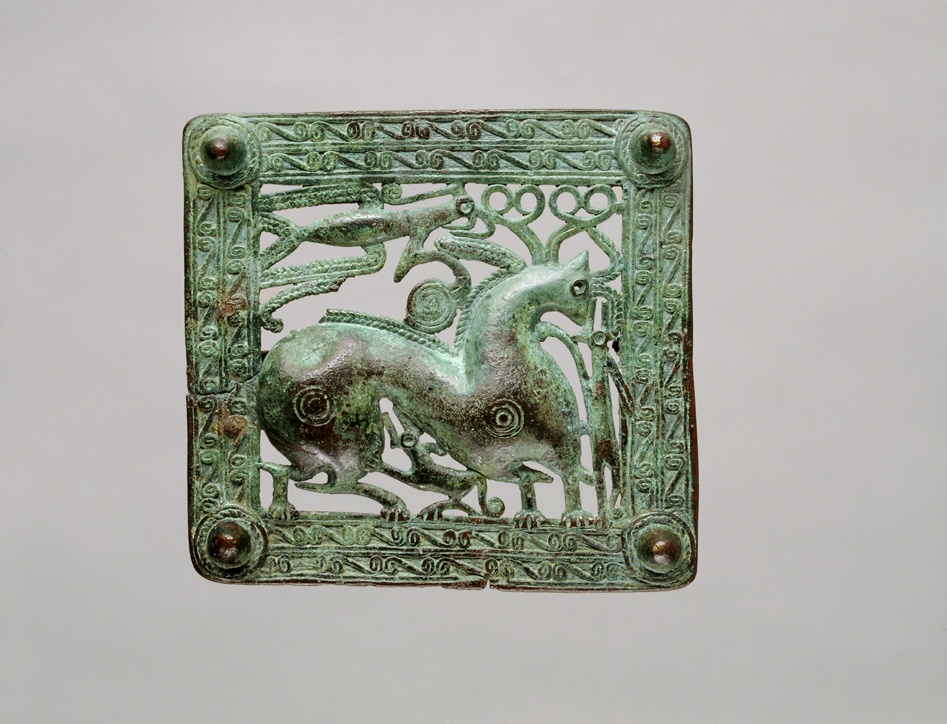
Bronze
H: 12.3 cm. W: 13.1 cm
Provenance: no indication
Caucasus
1st-2nd century A.D.
Ex collection:
Professor Friedrich Sarre
Cast by the lost wax method, the wax probably prepared as for the boar, cat. no. 218; a cone on each of the four corners; the stag's shoulder and thigh bulbous and decorated with incised circles; on the reverse a loop and hook. Lightly worked over in
the cold.
Condition: patina a light green with a dark claret-coloured metal showing through and the odd spot of iron deposit; on the reverse the hollow body of the stag with casting burrs. A crack through the border behind the buttock, a nick on the lower edge, a crack through the upper body of the bird; two different parts of the tail - that curves up and forward above the stag's body ending in a spiral - missing; an indent on the croup.
The rectangular belt clasp is decorated with a wide border, a double row of S-spirals framed by three double lines. The central motif of the openwork design a stylized stag and, in keeping with the usual pattern, three smaller animals - here, on the present example, a dog [1] below its belly and another in front of its chest, and a bird of prey above its back.
There are many similar plaques with similar type borders, sometimes with three rows of S-spirals or with herring-bone patterns and other slight variants; the same holds true for the scene of which the central animal is usually either a stag or horse and the lesser figures dogs, birds, goats or foals.
A close comparison is the belt plaque in Los Angeles [2] .
Exhibited and Published:
Kunstschätze aus Iran, cat. no. 888, p. 185.
1 Usually described as such and probably indicating a hunting scene. The thought that it might be possible to see in these creatures two fawns, one attempting to suckle and the other reaching up to its mother's face in a gesture of playful tenderness, is a tempting one, though their long ears are more in keeping with those of dogs.
2 County Museum of Art M.76.97.612: Moorey, P.R.S. et al.: Ancient Bronzes, Ceramics and Seals. The Nasli M. Heeramaneck Collection of Ancient Near Eastern, Central Asiatic, and European Art (Los Angeles, 1981), no. 944, p. 184 (E. Bunker). With the following slight differences: the border three rows of S-spirals enclosed by four single lines and the antlers numbering three with double loops, whereas the present example features two antlers.